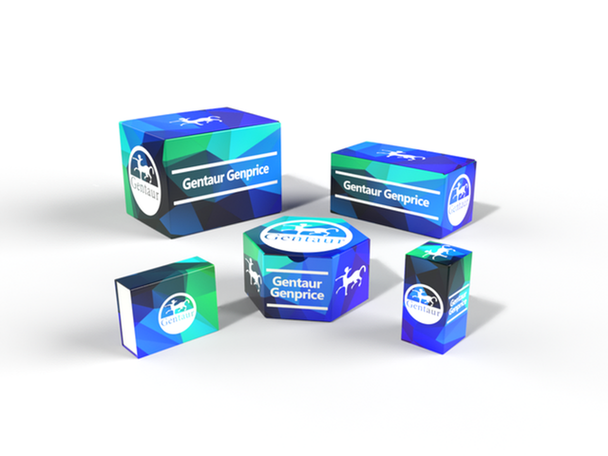Description
SCF Antibody (biotin) | XP-5264Bt | Gentaur UK, US & Europe Distribution
Host: Rabbit
Reactivity: Human
Homology: N/A
Immunogen: Produced from sera of rabbits pre-immunized with highly pure (>98%) recombinant hSCF (human Stem Cell Factor) .
Research Area: Signal Transduction, Immunology, Antibody Pairs
Tested Application: E, WB
Application: ELISA:
Sandwich:
To detect hSCF by sandwich ELISA (using 100 μL/well antibody solution) a concentration of 0.25 - 1.0 μg/mL of this antibody is required. This biotinylated polyclonal antibody, in conjunction with our Polyclonal Anti-Human SCF (XP-5264) as a capture antibody, allows the detection of at least 0.2 - 0.4 ng/well of recombinant hSCF.
Western Blot:
To detect hSCF by Western Blot analysis this antibody can be used at a concentration of 0.1 - 0.2 μg/mL. Used in conjunction with compatible secondary reagents the detection limit for recombinant hSCF is 1.5 - 3.0 ng/lane, under either reducing or non-reducing conditions.
Specificiy: N/A
Positive Control 1: N/A
Positive Control 2: N/A
Positive Control 3: N/A
Positive Control 4: N/A
Positive Control 5: N/A
Positive Control 6: N/A
Molecular Weight: N/A
Validation: N/A
Isoform: N/A
Purification: Anti-hSCF specific antibody was purified by affinity chromatography and then biotinylated.
Clonality: Polyclonal
Clone: N/A
Isotype: N/A
Conjugate: Biotin
Physical State: Lyophilized
Buffer: N/A
Concentration: N/A
Storage Condition: SCF antibody is stable for at least 2 years from date of receipt at -20˚C. The reconstituted antibody is stable for at least two weeks at 2-8˚C. Frozen aliquots are stable for at least 6 months when stored at -20˚C. Avoid repeated freeze-thaw cycles.
Alternate Name: SF, MGF, SCF, FPH2, KL-1, Kitl, SHEP7, Kit ligand, Mast cell growth factor
User Note: Centrifuge vial prior to opening.
BACKGROUND: Stem Cell Factor (SCF) is a hematopoietic growth factor that exerts its activity at the early stages of hematopoiesis. SCF stimulates the proliferation of mast cells and is able to augment the proliferation of both myeloid and lymphoid hematopoietic progenitors in bone marrow culture. It also mediates cell to cell adhesion and acts synergistically with other cytokines, probably interleukins. A soluble form is produced by proteolytic processing of isoform 1 in the extracellular domain.






